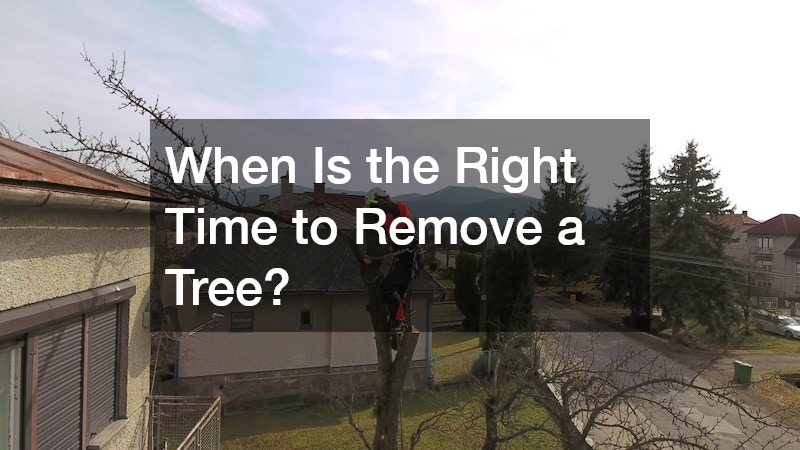
Trees are an integral part of our environment, bringing beauty, shade, and habitat to local wildlife. However, there are times when tree removal becomes necessary for safety, health, or aesthetic reasons. Knowing when to undertake tree removal is crucial for maintaining a healthy landscape and protecting property.
Video Source
In this article, we will explore the indicators that suggest it might be time to remove a tree from your property, along with the implications of such a decision. For homeowners and landscapers alike, understanding the right timing can save time, money, and potential hazards.
One of the most significant indicators that a tree may need to be removed is damage to its structure. If a tree is leaning at an unusual angle, it can indicate that the root system is compromised, making it unstable. Additionally, large cracks in the trunk can weaken the tree's structural integrity and make it more prone to falling during a storm. Dead or decaying branches can also be a sign that the tree is in poor health and may be at risk. Regular inspections can reveal these signs early, allowing homeowners to make informed decisions regarding tree removal.
Fungal growth at the base of a tree or along the trunk is another alarming sign. Fungi often signal that the tree is suffering from rot, indicating that the tree is reaching the end of its life. If the bark is peeling or the tree exhibits significant discoloration, these are also red flags that should not be ignored. Cracks, cavities, and holes can become entry points for pests that further exacerbate the tree’s decline. Understanding these aspects of tree health is essential for preventing potential safety hazards.
Ultimately, tree removal is a last resort when the risks outweigh the benefits. However, many property owners need to recognize these problems early. Consulting with an arborist can provide the necessary expertise to assess the degree of damage and the potential safety risks involved. A professional can help determine whether tree removal is necessary or if the tree can be treated and saved. In many cases, early detection can lead to a different course of action that protects the landscape and local environment.
Trees can also face various health issues that may necessitate removal. Diseases such as Dutch elm disease, oak wilt, and others can severely affect a tree’s health. When a tree is suffering from a disease that cannot be treated or managed, removing the tree may be the best option to prevent the spread to healthy trees nearby. For instance, if you notice yellowing leaves or a significant loss of foliage in the growing season, it may indicate a serious issue. Observing these symptoms can be crucial for timely intervention.
Pests can also significantly impact the health of trees, sometimes rendering them irreparable. Invasive species, such as the emerald ash borer, can decimate entire populations of trees very rapidly. Additionally, an infestation can weaken a tree, making it more prone to other diseases and environmental stressors. If you see a colony of insects or significant dieback in the crown, it may be time to seek professional help. Proactively addressing these problems can mitigate risks to your landscape.
The location of a tree often plays a significant role in determining if it should be removed. Trees growing too close to structures can pose a substantial risk, especially during inclement weather. Root systems can damage foundations, while large branches can fall on roofs or vehicles. If you notice that a tree is growing into power lines or obstructing visibility on a driveway, it may need to be removed. Ensuring that trees are planted at a safe distance from structures is crucial in landscape planning.
Safety should always be a priority when it comes to any potential risks posed by trees. If a tree is located in a high-traffic area, it can pose a danger to pedestrians and vehicles. The risk of fall injuries increases if trees are not adequately maintained or assessed for their stability. When a tree is near walkways, parking areas, or balconies, the likelihood of accidents can heighten dramatically. Addressing these safety concerns can prevent legal liabilities and injuries.
Recognizing when a tree’s location poses a danger is integral to tree management. In many situations, relocating trees can be a viable option rather than outright removal. However, if a tree is too large or established, removal may be necessary for safety reasons. Engaging a professional service for tree removal will ensure that the process is conducted safely and efficiently. Ultimately, maintaining safety and functionality in your landscape should factor heavily into your decision-making process regarding tree removal.
